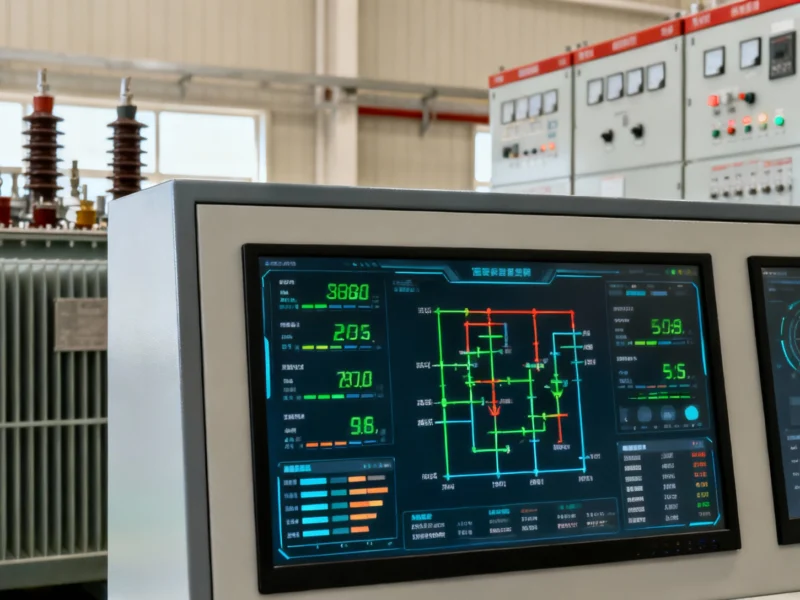The artificial intelligence boom continues to create surprising winners, with fuel cell manufacturer Bloom Energy becoming the latest beneficiary. The company’s shares rocketed 27% following Monday’s announcement of a massive $5 billion, multi-year deal with real estate giant Brookfield to power hyperscale datacenters, particularly in European markets.
The Brookfield Partnership: A Transformative Deal
Brookfield’s commitment represents more than three years of Bloom Energy’s current revenues, signaling a major vote of confidence in the company’s technology. The partnership focuses on ensuring reliable electricity for Brookfield’s expanding network of hyperscale datacenters, which require massive, uninterrupted power supplies to support AI workloads and cloud computing infrastructure.
Analyst Maheep Mandloi from Mizuho estimates that Bloom could provide approximately one-sixth of Brookfield’s datacenter power generation over the next five years. This translates to roughly 200 megawatts of Bloom box orders annually, though the company’s “constrained” manufacturing capacity means much of this volume will be backend loaded in the agreement timeline.
Founder’s Fortune Soars Amid Market Enthusiasm
The deal proved particularly lucrative for Bloom Energy founder and CEO KR Sridhar, whose 4.6 million shares surged to approximately $490 million in value. According to recent SEC ownership filings, Sridhar maintains a 2.7% stake in the company, making him by far the largest individual shareholder despite recent selling activity.
Bloom’s stock performance has been nothing short of spectacular, with shares rising more than 900% over the past 12 months to reach a market capitalization of $25 billion. This valuation represents nearly 18 times revenues for a company that has never achieved profitability in its 24-year history, highlighting the market’s current appetite for AI-related infrastructure plays.
Bloom’s Technology: NASA Roots and Current Applications
Bloom Energy’s origins trace back to founder KR Sridhar’s work with NASA, where he initially developed oxygen-producing machines for space missions. The company’s core innovation involved reversing this technology to create solid oxide fuel cells that generate electricity from natural gas while emitting carbon dioxide.
The company has deployed thousands of its distinctive box-shaped units worldwide, collectively generating approximately 1.4 gigawatts of electricity—enough to power about one million homes. However, these systems are best suited for “distributed generation” applications rather than replacing traditional backup generators, as they require hours to warm up and are designed for continuous operation.
Financial Reality: Persistent Losses and Challenges
Despite the recent market enthusiasm, Bloom Energy’s financial history reveals significant challenges. According to SEC financial filings, the company has accumulated a staggering $4 billion cumulative historic deficit, with net losses averaging over $200 million annually during the past three years.
The first half of 2025 showed some improvement, with net losses narrowing to $66 million on $730 million in revenue compared to a $119 million loss during the same period a year earlier. However, the company’s valuation at 18 times revenues suggests investors are betting heavily on future growth rather than current financial performance.
Environmental Considerations and Operational Complexities
While Bloom boxes emit lower levels of noxious compounds than traditional generators, this advantage comes from elaborate filtration systems that capture hazardous materials like benzene and sulfur compounds. These filters require replacement every 12-18 months, creating ongoing maintenance requirements and costs.
Every one of Bloom’s thousands of deployed units operates under service and maintenance contracts, representing both a recurring revenue stream and significant operational complexity. Analyst reports from TD Cowen suggest that power from fuel cells costs at least 1.5 times more than deploying solar fields with battery storage, raising questions about long-term economic viability.
Durability Concerns and Equipment Buybacks
Bloom has faced challenges regarding the durability of its systems, with units typically requiring retrofitting or “repowering” after approximately six years of operation. The extreme operating temperatures—reaching 1,000 degrees Fahrenheit—cause component breakdowns that necessitate significant maintenance.
Recent SEC disclosures revealed several situations where Bloom had to buy back more than $100 million worth of its equipment. One notable instance involved a 2015 project backed by Constellation and Intel, where Bloom repurchased 37 megawatts of systems operating under long-term contracts and took a $124 million impairment charge.
European Expansion Strategy
Analyst Dushyant Ailani from Jefferies identifies Italy and France as the most likely initial markets for the Brookfield partnership, noting that these countries already rely heavily on natural gas for power generation. This existing infrastructure makes integration of Bloom’s technology more straightforward.
Ailani observes that Bloom “is benefitting from a clear investor thirst to invest in the thematic of additionality and speed-to-power with less regard to the fundamentals and duration of the cycle.” This sentiment reflects the current market environment where AI-related infrastructure investments are receiving premium valuations despite traditional financial metrics.
Competitive Landscape and Industry Context
The $5 billion deal with Brookfield must be viewed in the context of massive datacenter investments occurring worldwide. Brookfield affiliates are currently developing a $23 billion, 1 gigawatt datacenter in France and a $10 billion, 750 megawatt facility in Sweden, making the Bloom partnership part of a much larger infrastructure push.
Bloom brings substantial datacenter experience to the table, having previously worked with technology giants including Google, Amazon, Intel, and Oracle. However, the company operates in a competitive energy technology landscape that includes emerging solutions from companies involved in AI integration projects, telecommunications infrastructure, and advanced computing systems.
Future Outlook in Evolving Energy Markets
The partnership comes at a time when energy technology is rapidly evolving, with major players like OpenAI and Broadcom making significant chip investments and companies like Microsoft developing advanced AI image generation technology. These developments are driving unprecedented demand for reliable, scalable power solutions.
While Bloom Energy faces ongoing challenges related to profitability, equipment durability, and competitive cost structures, the Brookfield partnership represents the company’s most significant opportunity to date. Whether this deal marks a turning point for the long-struggling fuel cell maker or simply another chapter in its volatile history remains to be seen, but for now, investors and founder KR Sridhar are enjoying the ride.



